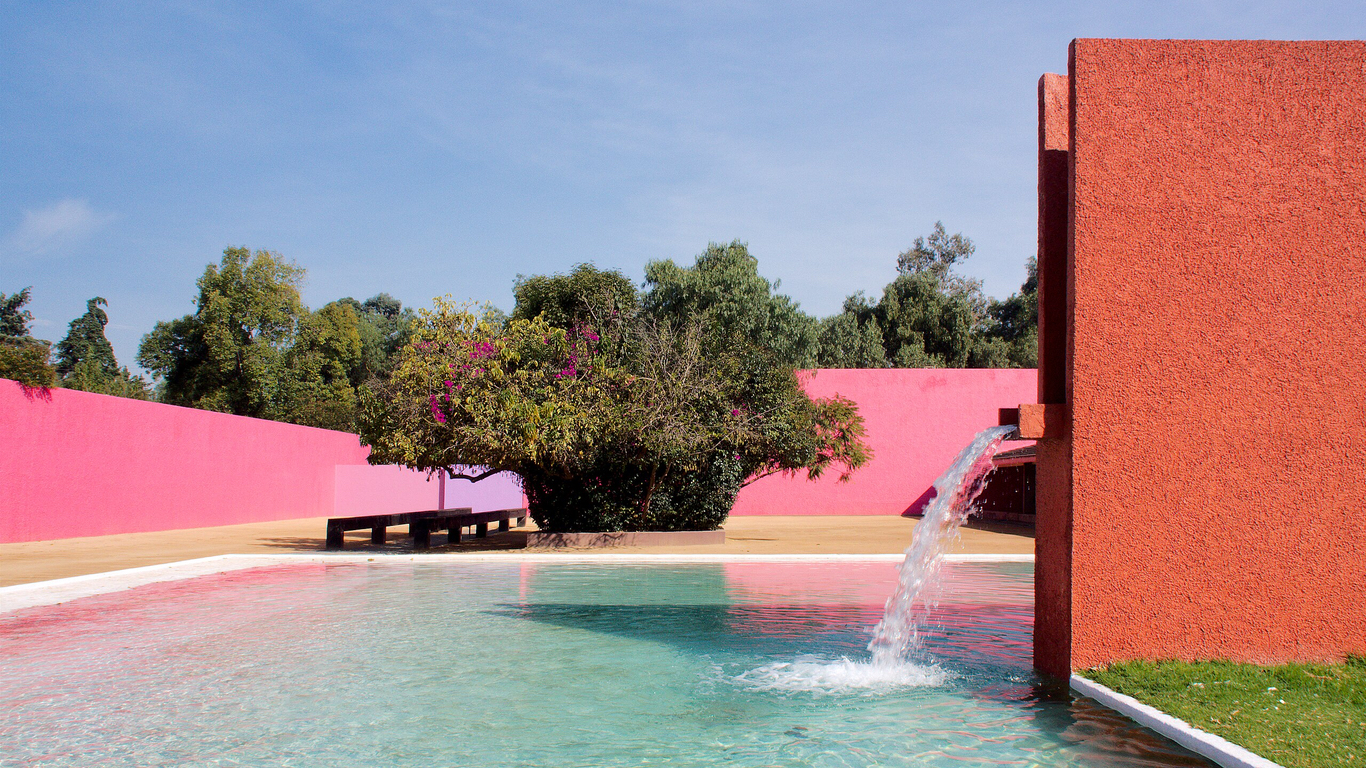
Luis Barragán (March 9, 1902 – November 22, 1988) was a renowned Mexican architect and engineer whose work became internationally celebrated for its fusion of modernist principles with traditional Mexican forms, bold and beautiful colors, and landscapes. Born in Guadalajara, Barragán studied engineering and later became a self-taught architect, drawing inspiration from European travels and encounters with modernist thinkers such as Le Corbusier. After moving to Mexico City in the 1930s, he began to develop a distinct architectural language that emphasized simplicity, tranquility, and the poetic use of light, shadow, texture, and color. His concept of “emotional architecture” rejected purely functionalist ideals in favor of spaces that inspired contemplation and spiritual resonance.
Barragán’s most iconic works include the Torres de Satélite (in collaboration with sculptor Mathias Goeritz), Casa Luis Barragán (his own home and studio), Cuadra San Cristóbal, Casa Gilardi, and the Capuchinas Sacramentarias chapel. Though he worked almost exclusively in Mexico, his influence was global, earning him the Pritzker Architecture Prize in 1980 – making him one of the few Latin American architects to receive the honor. In 2004, Casa Luis Barragán was designated a UNESCO World Heritage Site for its outstanding contribution to modern architecture. Barragán’s legacy lies in his masterful blending of modernism with Mexican heritage, creating spaces that are as emotionally evocative as they are visually striking.
Select Projects:
Barragán House, Mexico
Jardines del Bosque, Mexico
Torres de Satélite, Mexico
Jardines del Pedregal, Mexico
Gálvez House, Mexico
Casa Gilardi, Mexico
Centro Tane, Mexico
Bernal Molina House, Mexico
Doral Park Country Club, Florida
Coppola House, California
More Reading:
Barragan Foundation
Luis Barragán’s Forgotten Works Revisited